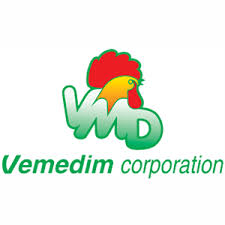Floating Cover Applications
Properly designed reservoir floating cover systems prevent fluid loss due to evaporation, reduce chemical demand and improve water quality by preventing contamination from bird droppings, airborne particulates, dead animals pollen and other pollutants. Floating covers block off sunlight preventing algae bloom. They also reduce the production of trialomethane (THM) type compounds such as chloroform from forming that result from the combining of organic substances with chlorine due to reductions in chlorine demand. In anaerobic digester systems, floating covers are increasingly being used to capture organic gases and to reduce biological oxygen demand (BOD).
Floating cover systems were introduced over 30 years ago. Many have provided a service life beyond 20 years. When first introduced, materials and designs were not developed and in some cases had limited success. Today, with advancements in design and materials, floating covers offer the low cost quality solution of choice where water quality standards require potable water reservoirs be covered.
Floating cover applications range from anaerobic digestion covers for wastewater systems, to potable water reservoir covers for municipal drinking water applications. In farming applications they have been successfully used with enzymes to capture methane gas that is used to fuel electricity producing generators that can satisfy 150% of a typical swine farm’s electrical power requirements. This alternative generates renewable “green energy” from an otherwise polluting system that provides zero return on investment. In agricultural and other water management applications, floating covers are increasing being used for evaporation control and odor control.
Methane (Biogas) from Anaerobic digesters
Methane, or biogas, can be produced from the digestion of organic material by anaerobic bacteria. This gas can be used for a variety of energy needs.
Methane is a gas that contains molecules of methane with one atom of carbon and four atoms of hydrogen (CH4). It is the major component of the “natural” gas used in many homes for cooking and heating. It is odorless, colorless, and yields about 1,000 British Thermal Units (Btu) [252 kilocalories (kcal)] of heat energy per cubic foot (0.028 cubic meters) when burned. Natural gas is a fossil fuel that was created eons ago by the anaerobic decomposition of organic materials. It is often found in association with oil and coal.
The same types of anaerobic bacteria that produced natural gas also produce methane today. Anaerobic bacteria are some of the oldest forms of life on earth. They evolved before the photosynthesis of green plants released large quantities of oxygen into the atmosphere. Anaerobic bacteria break down or “digest” organic material in the absence of oxygen and produce “biogas” as a waste product. (Aerobic decomposition, or composting, requires large amounts of oxygen and produces heat.) Anaerobic decomposition occurs naturally in swamps, water-logged soils and rice fields, deep bodies of water, and in the digestive systems of termites and large animals. Anaerobic processes can be managed in a “digester” (an airtight tank) or a covered lagoon (a pond used to store manure) for waste treatment. The primary benefits of anaerobic digestion are nutrient recycling, waste treatment, and odor control. Except in very large systems, biogas production is a highly useful but secondary benefit.
Biogas produced in anaerobic digesters consists of methane (50%-80%), carbon dioxide (20%-50%), and trace levels of other gases such as hydrogen, carbon monoxide, nitrogen, oxygen, and hydrogen sulfide. The relative percentage of these gases in biogas depends on the feed material and management of the process. When burned, a cubic foot (0.028 cubic meters) of biogas yields about 10 Btu (2.52 kcal) of heat energy per percentage of methane composition. For example, biogas composed of 65% methane yields 650 Btu per cubic foot (5,857 kcal/cubic meter).
Digester Designs
Anaerobic digesters are made out of concrete, steel, brick, or plastic. They are shaped like silos, troughs, basins or ponds, and may be placed underground or on the surface. All designs incorporate the same basic components: a pre-mixing area or tank, a digester vessel(s), a system for using the biogas, and a system for distributing or spreading the effluent (the remaining digested material).
There are two basic types of digesters: batch and continuous. Batch-type digesters are the simplest to build. Their operation consists of loading the digester with organic materials and allowing it to digest. The retention time depends on temperature and other factors. Once the digestion is complete, the effluent is removed and the process is repeated.
In a continuous digester, organic material is constantly or regularly fed into the digester. The material moves through the digester either mechanically or by the force of the new feed pushing out digested material. Unlike batch-type digesters, continuous digesters produce biogas without the interruption of loading material and unloading effluent. They may be better suited for large-scale operations. There are three types of continuous digesters: vertical tank systems, horizontal tank or plug-flow systems, and multiple tank systems. Proper design, operation, and maintenance of continuous digesters produce a steady and predictable supply of usable biogas.
Many livestock operations store the manure they produce in waste lagoons, or ponds. A growing number of these operations are placing floating covers on their lagoons to capture the biogas. They use it to run an engine/generator to produce electricity.
The Digestion Process
Anaerobic decomposition is a complex process. It occurs in three basic stages as the result of the activity of a variety of microorganisms. Initially, a group of microorganisms converts organic material to a form that a second group of organisms utilizes to form organic acids. Methane-producing (methanogenic) anaerobic bacteria utilize these acids and complete the decomposition process.
A variety of factors affect the rate of digestion and biogas production. The most important is temperature. Anaerobic bacteria communities can endure temperatures ranging from below freezing to above 135° Fahrenheit (F) (57.2° Centigrade [C]), but they thrive best at temperatures of about 98°F (36.7°C) (mesophilic) and 130°F (54.4°C) (thermophilic). Bacteria activity, and thus biogas production, falls off significantly between about 103° and 125°F (39.4° and 51.7°C) and gradually from 95° to 32°F (35° to 0°C).
In the thermophilic range, decomposition and biogas production occur more rapidly than in the mesophilic range. However, the process is highly sensitive to disturbances such as changes in feed materials or temperature. While all anaerobic digesters reduce the viability of weed seeds and disease-producing (pathogenic) organisms, the higher temperatures of thermophilic digestion result in more complete destruction. Although digesters operated in the mesophilic range must be larger (to accommodate a longer period of decomposition within the tank [residence time]), the process is less sensitive to upset or change in operating regimen.
To optimize the digestion process, the digester must be kept at a consistent temperature, as rapid changes will upset bacterial activity. In most areas of the United States, digestion vessels require some level of insulation and/or heating. Some installations circulate the coolant from their biogas-powered engines in or around the digester to keep it warm, while others burn part of the biogas to heat the digester. In a properly designed system, heating generally results in an increase in biogas production during colder periods. The trade-offs in maintaining optimum digester temperatures to maximize gas production while minimizing expenses are somewhat complex. Studies on digesters in the north-central areas of the country indicate that maximum net biogas production can occur in digesters maintained at temperatures as low as 72°F (22.2°C).
Other factors affect the rate and amount of biogas output. These include pH, water/solids ratio, carbon/nitrogen ratio, mixing of the digesting material, the particle size of the material being digested, and retention time. Pre-sizing and mixing of the feed material for a uniform consistency allows the bacteria to work more quickly. The pH is self-regulating in most cases. Bicarbonate of soda can be added to maintain a consistent pH, for example when too much “green” or material high in nitrogen content is added. It may be necessary to add water to the feed material if it is too dry, or if the nitrogen content is very high. A carbon/nitrogen ratio of 20/1 to 30/1 is best. Occasional mixing or agitation of the digesting material can aid the digestion process. Antibiotics in livestock feed have been known to kill the anaerobic bacteria in digesters. Complete digestion, and retention times, depend on all of the above factors.
Producing and Using Biogas
As long as proper conditions are present, anaerobic bacteria will continuously produce biogas. Minor fluctuations may occur that reflect the loading routine. Biogas can be used for heating, cooking, and to operate an internal combustion engine for mechanical and electric power. For engine applications, it may be advisable to scrub out hydrogen sulfide (a highly corrosive and toxic gas). Very large-scale systems/producers may be able to sell the gas to natural gas companies, but this may require scrubbing out the carbon dioxide.
Using the Effluent
The material drawn from the digester is called sludge, or effluent. It is rich in nutrients (ammonia, phosphorus, potassium, and more than a dozen trace elements) and is an excellent soil conditioner. It can also be used as a livestock feed additive when dried. Any toxic compounds (pesticides, etc.) that are in the digester feedstock material may become concentrated in the effluent. Therefore, it is important to test the effluent before using it on a large scale.
Economics
Anaerobic digester system costs vary widely. Systems can be put together using off-the-shelf materials. There are also a few companies that build system components. Sophisticated systems have been designed by professionals whose major focus is research, not low cost. Factors to consider when building a digester are cost, size, the local climate, and the availability and type of organic feedstock material.
In the United States, the availability of inexpensive fossil fuels has limited the use of digesters solely for biogas production. However, the waste treatment and odor reduction benefits of controlled anaerobic digestion are receiving increasing interest, especially for large-scale livestock operations such as dairies, feedlots, and slaughterhouses. Where costs are high for sewage, agricultural, or animal waste disposal, and the effluent has economic value, anaerobic digestion and biogas production can reduce overall operating costs. Biogas production for generating cost effective electricity requires manure from more than 150 large animals.
Below-ground, concrete anaerobic digesters have proven to be especially useful to agricultural communities in parts of the world such as China, where fossil fuels and electricity are expensive or unavailable. The primary purpose of these anaerobic digesters is waste (sewage) treatment and fertilizer production. Biogas production is secondary.
The most common means of collecting and storing the gas produced by a digester is with a floating cover—a weighted pontoon that floats on the liquid surface of a collection/storage basin.
Source: U.S. Department of Energy
How anaerobic digestion (methane recovery) works
Methane and Anaerobic Bacteria
Biodigesters recover methane from animal manure through a process called anaerobic digestion. Here’s how it works.
Methane is a gas that contains molecules of methane with one atom of carbon and four atoms of hydrogen (CH4 ). It is the major component of the “natural” gas used in many homes for cooking and heating. It is odorless, colorless, and yields about 1,000 British Thermal Units (Btu) [252 kilocalories (kcal)] of heat energy per cubic foot (0.028 cubic meters) when burned. Natural gas is a fossil fuel that was created eons ago by the anaerobic decomposition of organic materials. It is often found in association with oil and coal.
The same types of anaerobic bacteria that produce natural gas also produce methane today. Anaerobic bacteria are some of the oldest forms of life on earth. They evolved before the photosynthesis of green plants released large quantities of oxygen into the atmosphere. Anaerobic bacteria break down or “digest” organic material in the absence of oxygen and produce “biogas” as a waste product. (Aerobic decomposition, or composting, requires large amounts of oxygen and produces heat.)
Anaerobic decomposition occurs naturally in swamps, water-logged soils and rice fields, deep bodies of water, and in the digestive systems of termites and large animals. Anaerobic processes can be managed in a “digester” (an airtight tank) or a covered lagoon (a pond used to store manure) for waste treatment. The primary benefits of anaerobic digestion are nutrient recycling, waste treatment, and odor control. Except in very large systems, biogas production is a highly useful but secondary benefit.
Biogas produced in anaerobic digesters consists of methane (50%–80%), carbon dioxide (20%–50%), and trace levels of other gases such as hydrogen, carbon monoxide, nitrogen, oxygen, and hydrogen sulfide. The relative percentage of these gases in biogas depends on the feed material and management of the process. When burned, a cubic foot (0.028 cubic meters) of biogas yields about 10 Btu (2.52 kcal) of heat energy per percentage of methane composition. For example, biogas composed of 65% methane yields 650 Btu per cubic foot (5,857 kcal/cubic meter).
Anaerobic Digestion
Anaerobic decomposition is a complex process. It occurs in three basic stages as the result of the activity of a variety of microorganisms. Initially, a group of microorganisms converts organic material to a form that a second group of organisms utilizes to form organic acids. Methane-producing (methanogenic) anaerobic bacteria utilize these acids and complete the decomposition process.
A variety of factors affect the rate of digestion and biogas production. The most important is temperature. Anaerobic bacteria communities can endure temperatures ranging from below freezing to above 135° Fahrenheit (F) (57.2° Centigrade [C]), but they thrive best at temperatures of about 98°F (36.7°C) (mesophilic) and 130°F (54.4°C) (thermophilic). Bacteria activity, and thus biogas production, falls off significantly between about 103° and 125°F (39.4° and 51.7°C) and gradually from 95° to 32°F (35° to 0°C).
In the thermophilic range, decomposition and biogas production occur more rapidly than in the mesophilic range. However, the process is highly sensitive to disturbances, such as changes in feed materials or temperature. While all anaerobic digesters reduce the viability of weed seeds and disease-producing (pathogenic) organisms, the higher temperatures of thermophilic digestion result in more complete destruction. Although digesters operated in the mesophilic range must be larger (to accommodate a longer period of decomposition within the tank [residence time]), the process is less sensitive to upset or change in operating regimen.
To optimize the digestion process, the biodigester must be kept at a consistent temperature, as rapid changes will upset bacterial activity. In most areas of the United States, digestion vessels require some level of insulation and/or heating. Some installations circulate the coolant from their biogas-powered engines in or around the digester to keep it warm, while others burn part of the biogas to heat the digester. In a properly designed system, heating generally results in an increase in biogas production during colder periods. The trade-offs in maintaining optimum digester temperatures to maximize gas production while minimizing expenses are somewhat complex. Studies on digesters in the north-central areas of the country indicate that maximum net biogas production can occur in digesters maintained at temperatures as low as 72°F (22.2°C).
Other factors affect the rate and amount of biogas output. These include pH, water/solids ratio, carbon/nitrogen ratio, mixing of the digesting material, the particle size of the material being digested, and retention time. Pre-sizing and mixing of the feed material for a uniform consistency allows the bacteria to work more quickly. The pH is self-regulating in most cases. Bicarbonate of soda can be added to maintain a consistent pH; for example, when too much “green” or material high in nitrogen content is added. It may be necessary to add water to the feed material if it is too dry or if the nitrogen content is very high. A carbon/nitrogen ratio of 20/1 to 30/1 is best. Occasional mixing or agitation of the digesting material can aid the digestion process. Antibiotics in livestock feed have been known to kill the anaerobic bacteria in digesters. Complete digestion, and retention times, depend on all of the above factors.
Sludge or Effluent
The material drawn from the anaerobic digester is called sludge, or effluent. It is rich in nutrients (ammonia, phosphorus, potassium, and more than a dozen trace elements) and is an excellent soil conditioner. It can also be used as a livestock feed additive when dried. Any toxic compounds (pesticides, etc.) that are in the digester feedstock material may become concentrated in the effluent. Therefore, it is important to test the effluent before using it on a large scale.
The most common means of collecting and storing the gas produced by a digester is with a floating cover—a weighted pontoon that floats on the liquid surface of a collection/storage basin.
Source: energysavers.gov
Basic types of anaerobic digesters
Anaerobic Digesters
Basic Types:
While many different types of biogas recovery systems are available, the three designs most commonly used at U.S. farms are described below.
Covered anaerobic lagoon
An anaerobic lagoon is sealed with a flexible cover, and the methane is recovered and piped to the combustion device. Some systems use a single cell for combined digestion and storage.
Plug flow digester
A plug flow digester has a long, narrow concrete tank with a rigid or flexible cover. The tank is built partially or fully below grade to limit the demand for supplemental heat. Plug flow digesters are used only at dairy operations that collect manure by scraping.
Complete mix digester
A complete mix digester is an enclosed, heated tank with a mechanical, hydraulic, or gas mixing system. Complete mix digesters work best when there is some dilution of the excreted manure with water (e.g., milking center wastewater). The photo on the left shows an externally mounted mixer.
Additional digester types:
Several other digester types have also been constructed in recent years, such as induced blanket reactors, fixed film digesters and batch digesters.
Induced Blanket Reactors are digesters in which a blanket of sludge develops that retains anaerobic bacteria, providing a bacteria-rich environment through which influent must pass.
Fixed film digesters contain plastic media (e.g., pellets) on which bacteria attach and grow, instead of relying solely on suspended bacteria to break down the digester influent.
A batch digester is the simplest form of digestion, where manure is added to the reactor at the beginning of the process in a batch and the reactor remains closed for the duration of the process.
The most common means of collecting and storing the gas produced by a digester is with a floating cover—a weighted pontoon that floats on the liquid surface of a collection/storage basin.
Source: epa.gov
Anaerobic digester types and designs
Factors to consider when designing an anaerobic digestion system include cost, size, local climate, and the availability and type of organic feedstock material.
Anaerobic digesters—also known as biodigesters—are made out of concrete, steel, brick, or plastic. They are shaped like silos, troughs, basins or ponds, and may be placed underground or on the surface. All anaerobic digestion system designs incorporate the same basic components:
A pre-mixing area or tank
A digester vessel(s)
A system for using the biogas
A system for distributing or spreading the effluent (the remaining digested material).
There are two basic types of digesters:
Batch
Batch-type digesters are the simplest to build. Their operation consists of loading the digester with organic materials and allowing it to digest. The retention time depends on temperature and other factors. Once the digestion is complete, the effluent is removed and the process is repeated.
Continuous
In a continuous digester, organic material is constantly or regularly fed into the digester. The material moves through the digester either mechanically or by the force of the new feed pushing out digested material. Unlike batch-type digesters, continuous digesters produce biogas without the interruption of loading material and unloading effluent. There are three types of continuous digesters: vertical tank systems, horizontal tank or plug-flow systems, and multiple tank systems.
Proper design, operation, and maintenance of continuous digesters produce a steady and predictable supply of usable biogas. They may be better suited for large-scale operations.
Many livestock operations store the manure they produce in waste lagoons, or ponds. A growing number of these operations are placing floating covers on their lagoons to capture the biogas. They use it to run an engine/generator to produce electricity.
Floating cover applications
any type of gas collection from water basin
keep rain & snowmelt water separate from wastewater under the cover
Floating cover advantages:
provide a true “floating” cover, keeping the cover on the water surface avoiding damage from wind due to an inflated cover without lateral floats
accommodate fluctuation in water level
can be installed without interruption in basin use
can be installed on tanks or lagoons
eliminates rainwater pooling problems
eliminates inflating the cover and gas ballooning
hatches provide access under the cover for equipment
Biogas and anaerobic digestion - Covered lagoon
A covered lagoon digester is a large anaerobic lagoon (not a manure storage pond or basin) with a long retention time and a high dilution factor. Typically covered lagoons are used with flush manure management systems that discharge manure at 0.5 to 2 percent solids. The in-ground, earth or lined lagoon is covered with a flexible or floating gas tight cover. They are not heated and considered ambient temperature digesters. Retention time is usually 30-45 days or longer depending on lagoon size.
In climates that have elevated year round temperatures, such as southern and western U.S., these digesters can produce stable, reduced odor, nutrient rich effluent for application on fields and crops; pathogen and weed seed reduction and; produce biogas for farm energy use. Heat recovery from the biogas can be used to heat nurseries on swine farms and warm milking parlors on dairy farms. Very large lagoons in hot climates may produce sufficient quantity, quality and consistency of gas to justify use in an engine generator. In areas with cooler climates, waste digestion, odor control and gas production will be less consistent and the low quality gas may need to be flared off much of the year for odor control and greenhouse gas reduction.
Biogas and anaerobic digestion
Biogas is formed solely through the activity of bacteria, unlike composting in which fungi and lower creatures are also involved in the degradation process. Microbial growth and biogas production are very slow at ambient temperatures. They tend to occur naturally wherever high concentrations of wet organic matter accumulate in the absence of dissolved oxygen, most commonly in the bottom sediments of lakes and ponds, in swamps, peat bogs, intestines of animals, and in the anaerobic interiors of landfill sites.
The overall process of anaerobic digestion (AD) occurs through the symbiotic action of a complex bacteria consortium as show in diagram. Hydrolytic microorganisms, including common food spoilage bacteria, break down complex organic wastes. These subunits are then fermented into short-chain fatty acids, carbon dioxide, and hydrogen gases.
Syntrophic microorganisms then convert the complex mixture of short-chain fatty acids to acetic acid with the release of more carbon dioxide, and hydrogen gases. Finally, methanogenesis produces biogas from the acetic acid, hydrogen and carbon dioxide. Biogas is a mixture of methane, carbon dioxide, and numerous trace elements. According to some, the two key biological issues are determining the most favorable conditions for each process stage and how non-optimal circumstances affect each stage as a whole, and the governing role of hydrogen generation and consumption.
Primary functions of geosynthetisc
Geosynthetics are generally designed for a particular application by considering the primary function that can be provided. As seen in the accompanying table there are five primary functions given, but some groups suggest even more.
Separation is the placement of a flexible geosynthetic material, like a porous geotextile, between dissimilar materials so that the integrity and functioning of both materials can remain intact or even be improved. Paved roads, unpaved roads, and railroad bases are common applications. Also, the use of thick nonwoven geotextiles for cushioning and protection of geomembranes is in this category. In addition, for most applications of geofoam, separation is the major function.
Reinforcement is the synergistic improvement of a total system’s strength created by the introduction of a geotextile, geogrid or geocell (all of which are good in tension) into a soil (that is good in compression, but poor in tension) or other disjointed and separated material. Applications of this function are in mechanically stabilized and retained earth walls and steep soil slopes; they can be combined with masonry facings to create vertical retaining walls. Also involved is the application of basal reinforcement over soft soils and over deep foundations for embankments and heavy surface loadings. Stiff polymer geogrids and geocells do not have to be held in tension to provide soil reinforcement, unlike geotextiles. Stiff 2D geogrid and 3D geocells interlock with the aggregate particles and the reinforcement mechanism is one of confinement of the aggregate. The resulting mechanically stabilized aggregate layer exhibits improved load bearing performance. Stiff polymer geogrids, with rectangular or triangular apertures, in addition to three-dimensional geocells made from new polymeric alloys are also increasingly specified in unpaved and paved roadways, load platforms and railway ballast, where the improved load bearing characteristics significantly reduce the requirements for high quality, imported aggregate fills, thus reducing the carbon footprint of the construction.
Identification of the Usual Primary Function for Each Type of Geosynthetic
Filtration is the equilibrium soil-to-geotextile interaction that allows for adequate liquid flow without soil loss, across the plane of the geotextile over a service lifetime compatible with the application under consideration. Filtration applications are highway underdrain systems, retaining wall drainage, landfill leachate collection systems, as silt fences and curtains, and as flexible forms for bags, tubes and containers.
Drainage is the equilibrium soil-to-geosynthetic system that allows for adequate liquid flow without soil loss, within the plane of the geosynthetic over a service lifetime compatible with the application under consideration. Geopipe highlights this function, and also geonets, geocomposites and (to a lesser extent) geotextiles. Drainage applications for these different geosynthetics are retaining walls, sport fields, dams, canals, reservoirs, and capillary breaks. Also to be noted is that sheet, edge and wick drains are geocomposites used for various soil and rock drainage situations.
Containment involves geomembranes, geosynthetic clay liners, or some geocomposites which function as liquid or gas barriers. Landfill liners and covers make critical use of these geosynthetics. All hydraulic applications (tunnels, dams, canals, reservoir liners, and floating covers) use these geosynthetics as well.
Benefits and challenges of biogas technology
Biogas Technology
Anaerobic digestion can convert organic wastes into profitable byproducts as well as reduce their environmental pollution potential. Anaerobic digestion offers the following benefits to an animal feeding operation and the surrounding communities:
Electric and thermal energy.
Stable liquid fertilizer and high-quality solids for soil amendment.
Odor reduction.
Reduced groundwater and surface water contamination potential.
Potential revenue from sales of digested manure (liquid and solids) and excess electricity and/or processing off-site organic waste.
Reduction of greenhouse gas emissions; methane is captured and used as a fuel.
Revenue from possible reuse of digested solids as livestock bedding.
Potential revenue from green energy and carbon credits.
The cost of installing an anaerobic digester depends on the type and size of system, type of livestock operation, and site-specific conditions (EPA AgStar, 2006). In general, consider the following points when estimating installation/operating costs:
Estimate the cost of constructing the system.
Estimate the labor and cost of operating the system.
Estimate the quantity of gas produced.
Estimate the value of the gas produced.
Compare operation costs to benefits from operation (include value as a waste-treatment system and the fertilizer value of the sludge and supernatant).
The main financial obligations associated with building an anaerobic digester include capital (equipment and construction and associated site work), project development (technical, legal, and planning consultants; financing; utilities connection; and licensing), operation and maintenance, and training costs.
In making a decision to install a digester, one must realize that the system will require continuous monitoring and routine maintenance and repair that should not be underestimated. Components should be maintained as recommended by the manufacturers because manure and biogas can be corrosive on metal parts. In fact, the majority of digester failures over the past few decades were the result of management, not technological, problems.
Why use floating covers?
Floating Cover Systems
Floating Cover Systems are successfully used in several commercial and municipal applications. Some examples include:
evaporation and algae growth prevention
potable water protection from pollution and contamination
odor and emission control
biogas recovery for power generation or flaring
protection of birds and waterfowl from contact with hazardous liquids
remediation contamination
Why Use Floating Covers?
The best engineered floating cover systems cost 75% to 85% less than most every acceptable rigid roof structure. A single floating cover can exceed over a million square feet / 93,000 square meters of surface area and be viable. Saving of natural resources is another large factor that should be considered.
Floating cover systems prevent water loss due to evaporation; greatly reduce algae growth and treatment chemical demand resulting in improved water quality. They also provide barriers against contamination by dead animals, airborne particles such as pollen and bird droppings.
In potable water contamination applications, another advantage is treatment chemical cost reduction and positive health impact as considerably less chlorine is required in covered reservoirs. Using less chlorine in potable water enhances safety by reduced production of trihalomethane (TTHM) (a methane-derived compound that contains three halogen atoms, e.g. chloroform, formed especially during the chlorination of drinking water) type compounds like chloroform that result from the combining of organic substances with chlorine.
Floating Cover Systems have been used for about 35 years. Service life’s of 20 years or more have been recorded in potable water applications. Gas collecting floating cover systems can be expected to perform for about ten years.































